2018 Tough year on the Peregrine Cliff including the deaths of all 3 eyasses
2018 - A year of great sadness and change
I have already reported much of the changes that happened at the nest site but now sadly must add that the three eyasses did not survive to fledge. See below for all the details of the season.
A NEW NEST SITE
Boone and Dee changed nesting sites but not territory. We can only surmise the reason for the change as we had not visited the site from August 2017 to late April 2018 which was well after the three hatched. Maybe they decided another location was better. Maybe a predator came to the area. With heavy precipitation the cliff has been very wet so it is possible their nest site was too wet and a relocation was necessary. There was heavy precipitation about the time the eggs were laid. We were not there and do not know.
After hatch early visits to the site were sporadic due to high and fast water conditions that made paddling unsafe. I did not arrive in town until mid-May when the eyasses were half way to fledge and feathers filling in quickly.
BOONE IS GONE
On or about April 27, Boone was apparently forced from his territory. On that day an unbanded male Peregrine Falcon arrived on the cliff and at first was ignored. But finally an observer witnessed an interaction as Dee stayed with the young and Boone escorted the intruder out with no observed aggression. However, that was the last day Boone was seen and we do not know his fate.
Last photo of Boone presenting prey gift to Dee.
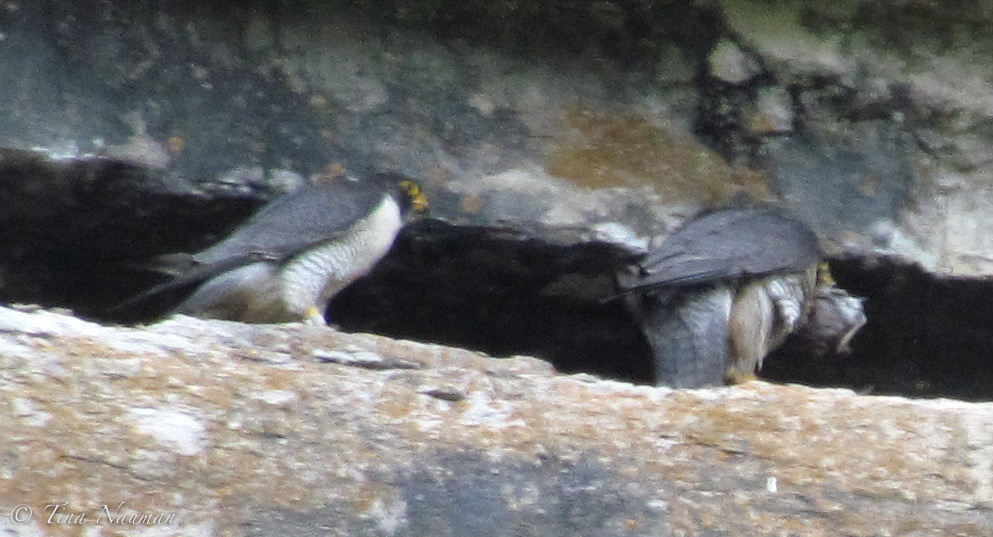

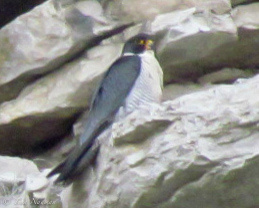
 Last photo of Boone.
Last photo of Boone.
These photos of the eyasses were taken before Boone was forced out. There is no reason to believe that Boone was not the parent of these three.
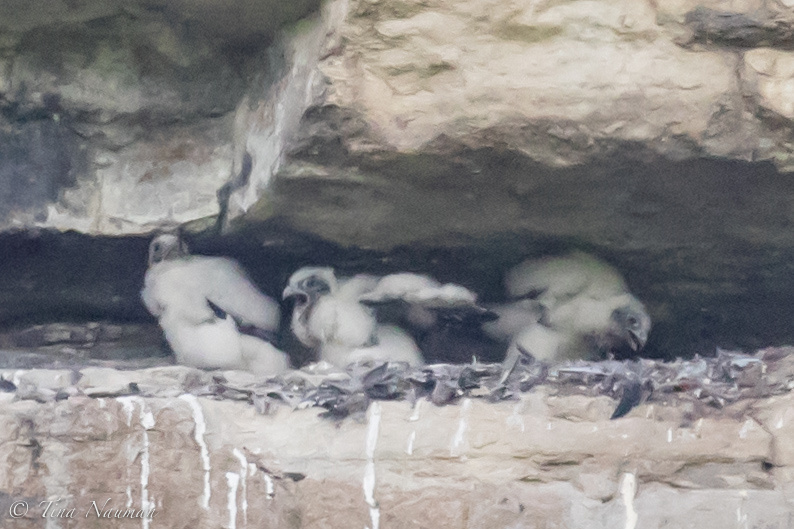

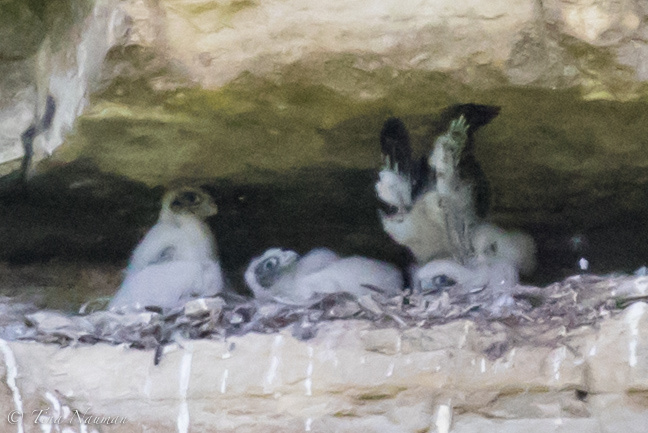

DEE APPEARS TO BE SOLE PROVIDER BUT THE INTRUDER HANGS AROUND
After Boone's disappearance, Dee apparently took over all prey capture, prep and feeding duties and was away from the nest site for extended periods of time but the eyasses were old enough to control their body temperatures. Dee and the eyasses' crops always looked full so Dee was able to keep up with the every increasing size and appetites. For the next 16 days, the unbanded male was seen a couple of times, quietly sitting on the cliff. From April 27 to May 12 we do not know if there was any interaction between Dee and the new male.
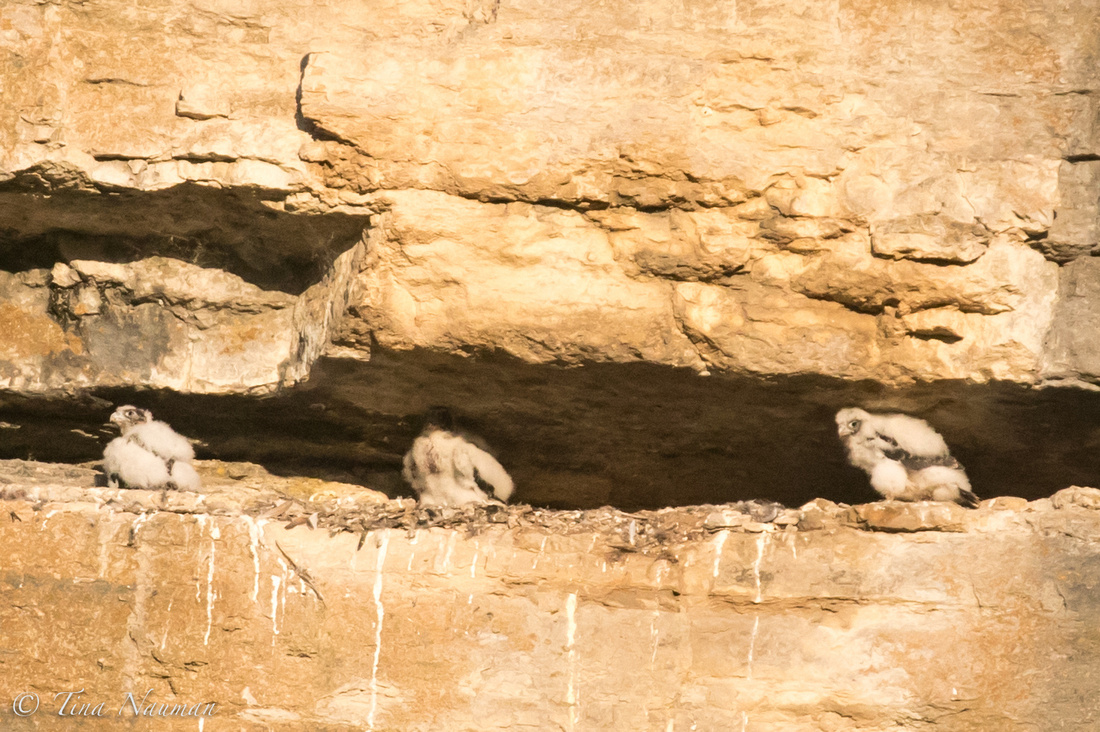

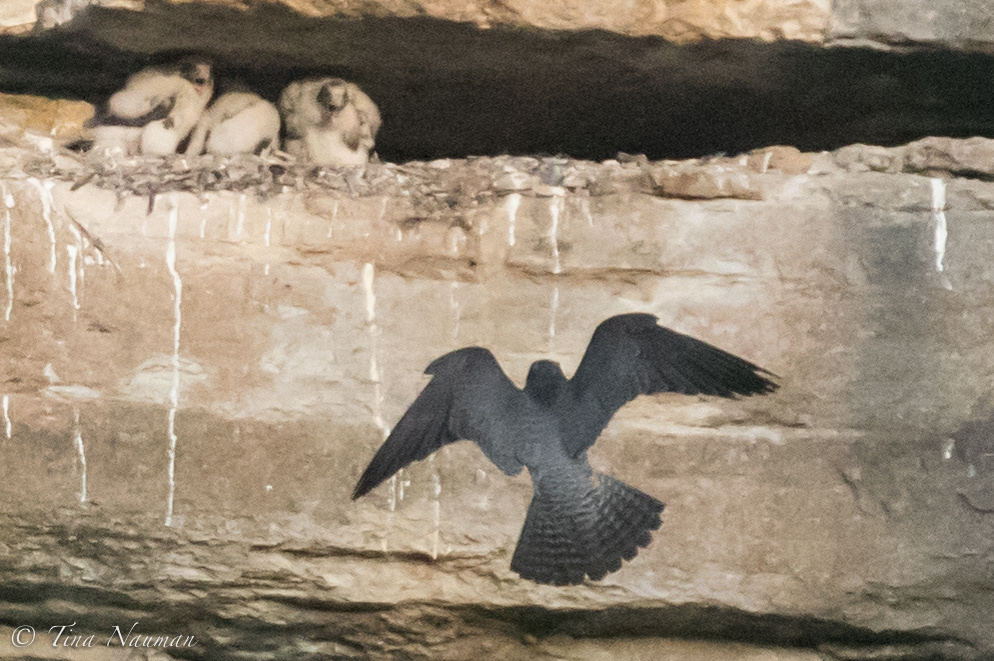

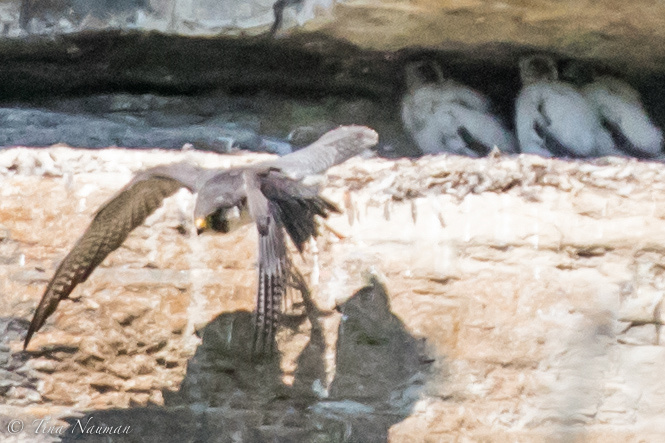

THE INTRUDER IS ACCEPTED AS A MATE
On May 12 Dee accepted prey gifts from the new male which she both ate and fed to the eyasses. After that she remained on site and it appears that all prey was brought in by the new male. Their crops remained full and seemed to be in excellent health. The male ignored the eyasses. Yes, we named him Boone II. We decided to honor the original Boone, first father of Kentucky natural cliff fledge, by continuing his name just as is done in a genealogy continuation of a name.
THE DEATH OF THE THREE EYASSES
Sadly the three eyasses did not survive to fledge.
On May 17, approximately 30 days after hatch with 10 to go until fledge, all three eyasses were missing from the nest site when I arrived. Very likely is predation by a Great Horned Owl as that is known as a Peregrine’s greatest danger to its young. There is a Red-tailed Hawk in the area that could have slipped in and grabbed them - one a day - when Dee would go hunting. Although not easily accessed they could have fallen victim to raccoons. Although we never saw any aggressive behavior by the new male during the preceding 2 weeks he was on site, it is possible that he killed them as they were not his. Could they have eaten something poisonous? No bodies were seen. As with everything that happened this year; we can only guess.
These are the last photos of the eyasses taken 3 days before their disappearance.
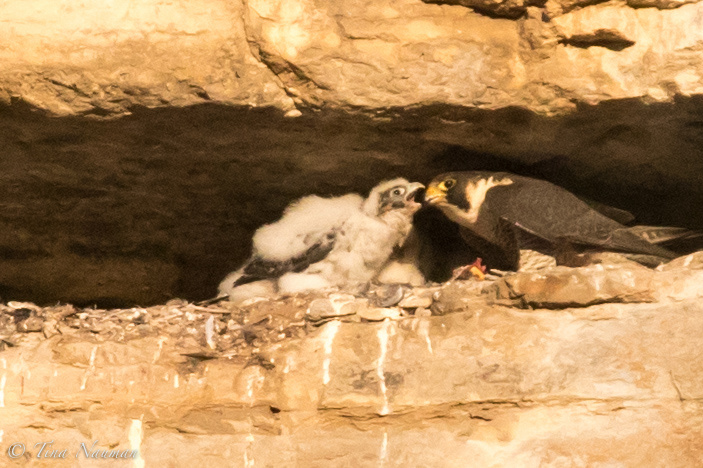

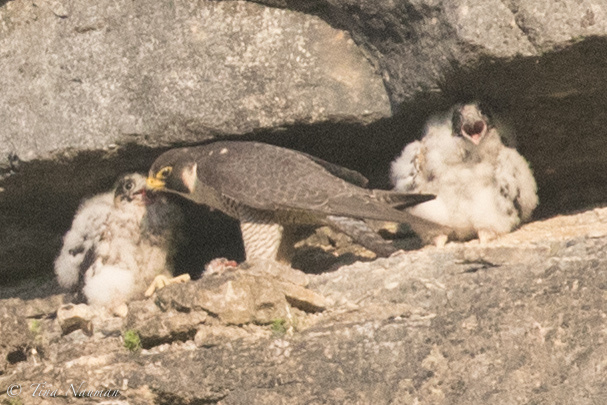

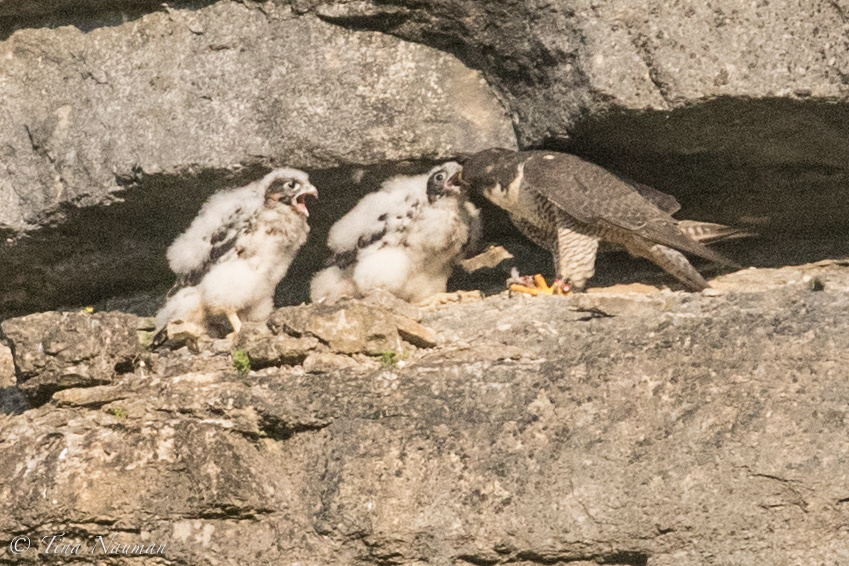

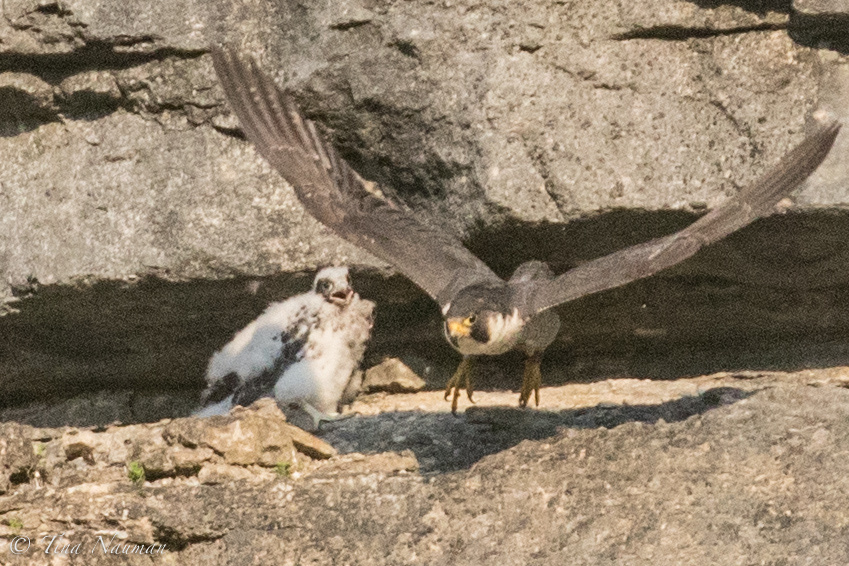

On that day I arrived at the cliff early in the morning and all was quiet without a sound or sight of any Peregrines. Mid-morning the Boone II was first to fly in with prey and was very agitated with short flights, landing all over the face of the nesting cliff as he vocalized. It appeared he was looking for Dee. At noon Dee flew in, also very vocal and agitated as she flew to the nest site and appeared to be looking for the eyasses. The two of them perched right next to each other as he prepped the morning prey and presented it to her. Then they both settled down several yards from each other and all was quiet. I departed.
Boone II photos but taken another day.
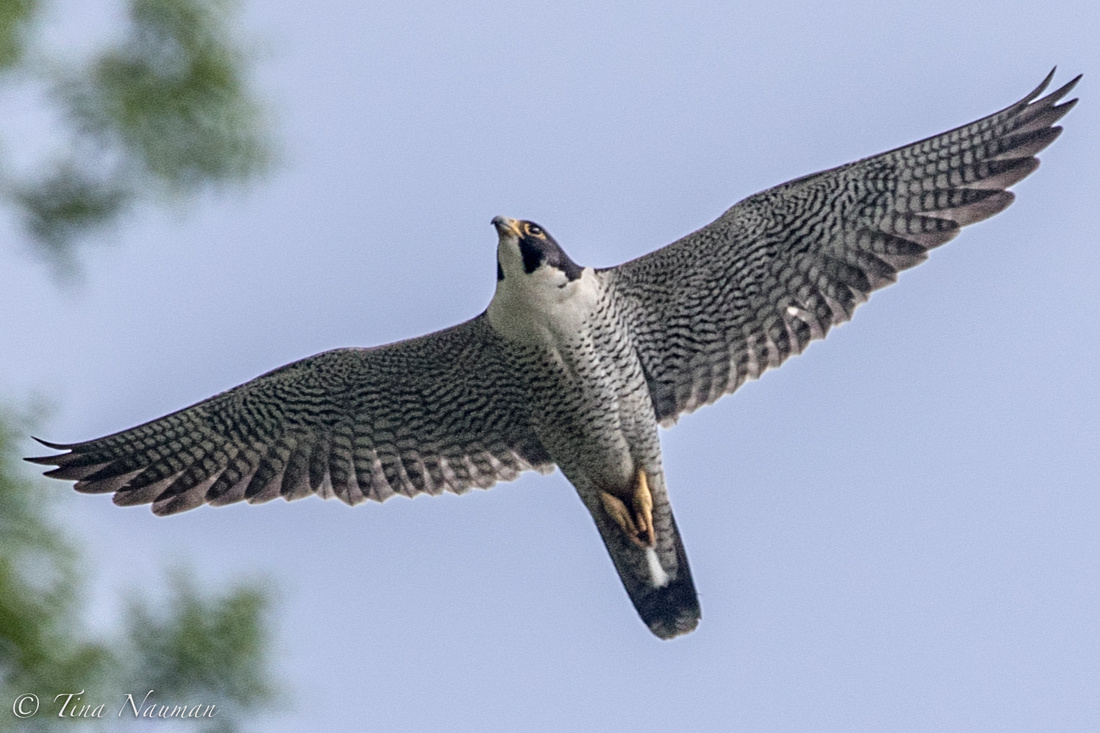

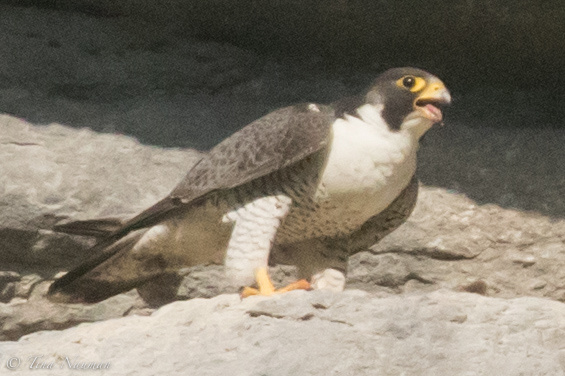

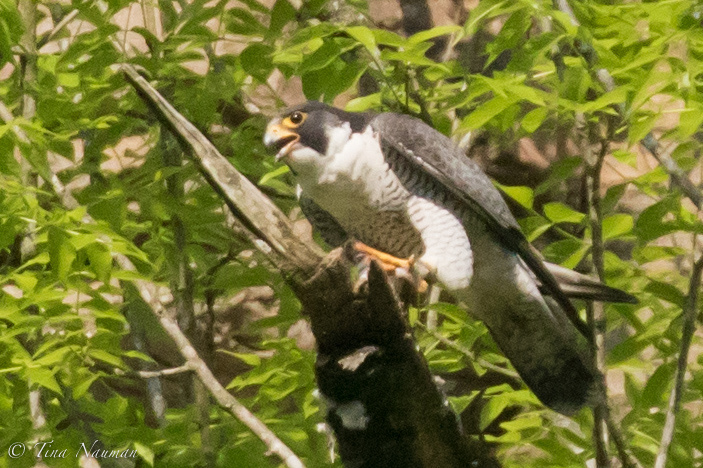

Dee vocalizing and flying to nest site
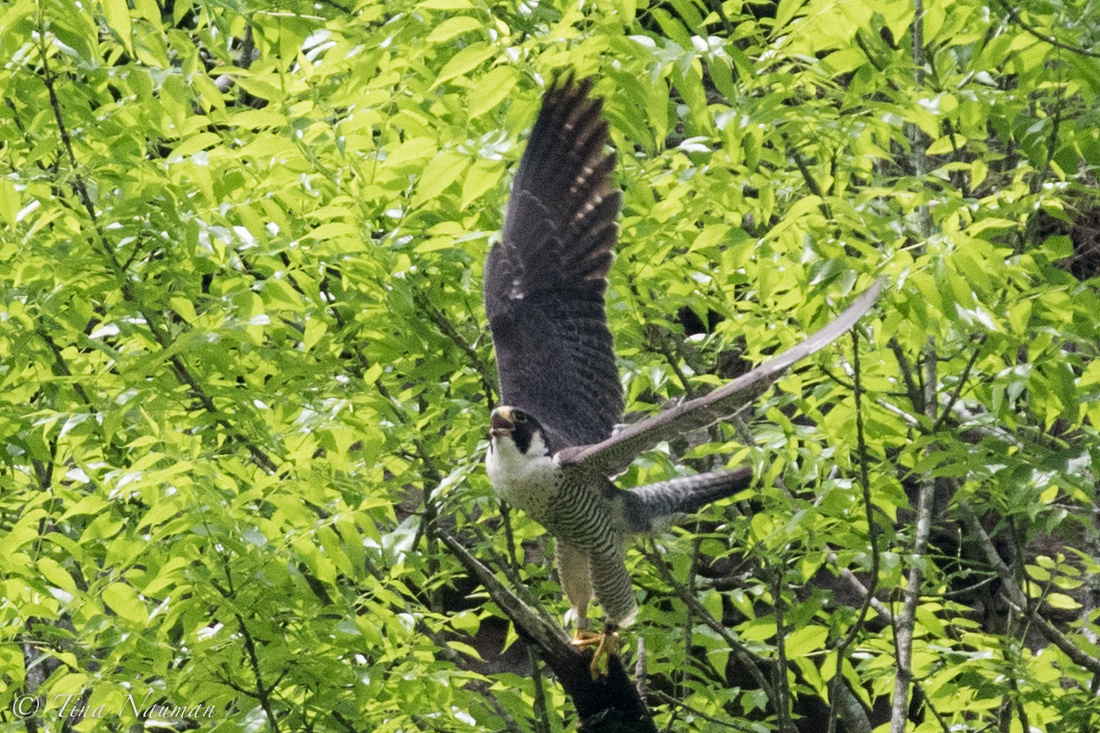

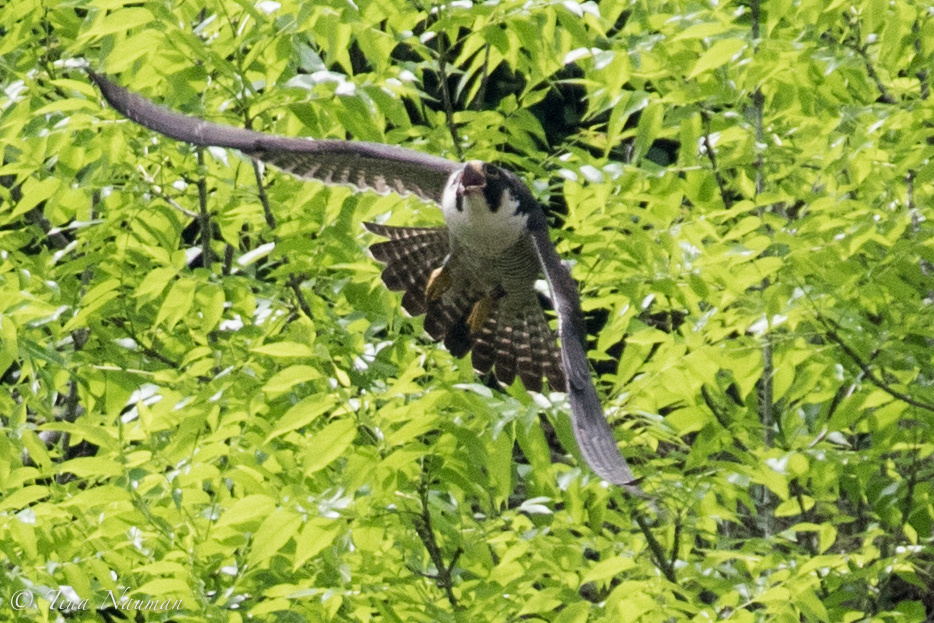

Dee at nest site surrounded by prey feathers.
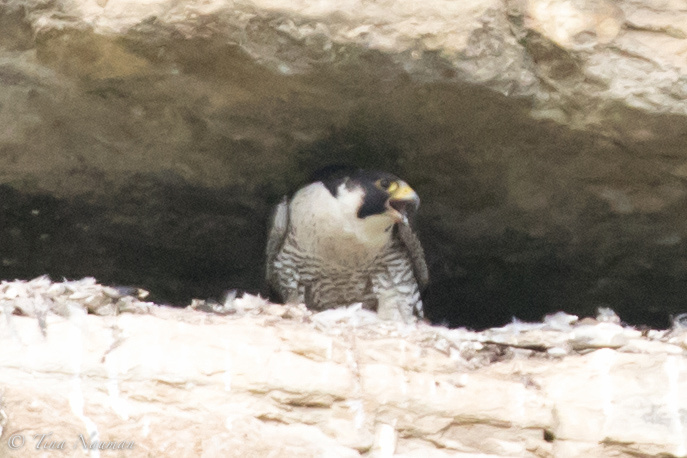

Boone II (left) and Dee (right) settling down together.
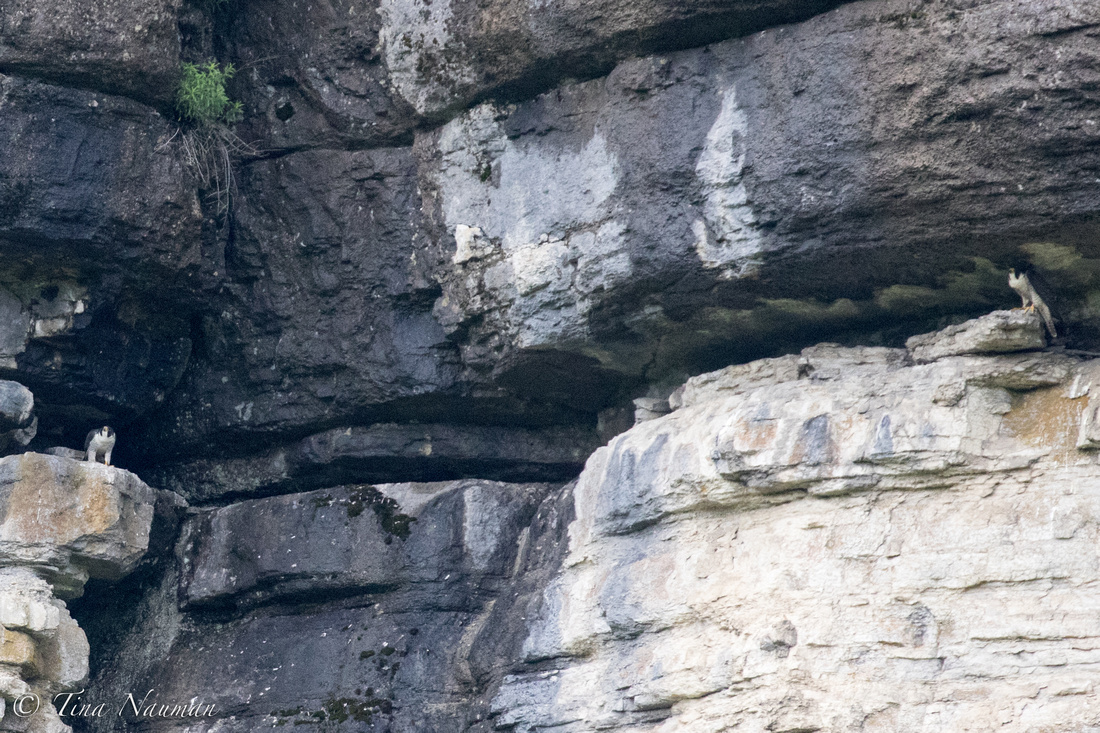
 THE FINAL SURPRISE
THE FINAL SURPRISE
I've only been back 3 weeks but ready to head out again so my fellow observer and I went paddling. Far from either nest site I heard the sounds of copulating Peregrines. Yes, in 2016 Boone was a busy guy as he courted the several females between Dixie and Dee and I got to know that sound well. I am guessing this copulation is about relationship-building rather than egg-making. Were they exploring together and stopped for some afternoon delight? Are they considering another nest site far from the others? Could there be eggs this year? And in the theme of the season.....we don't know.
Hopefully Dee and Boone II will develop a strong and united union that will lead to a successful fledge next year. But, we all recognize that success is often left to the whims of weather and predation.
BOONE II BEING CHECKED OUT BY THE LOCALS AT A NEW LOCATION
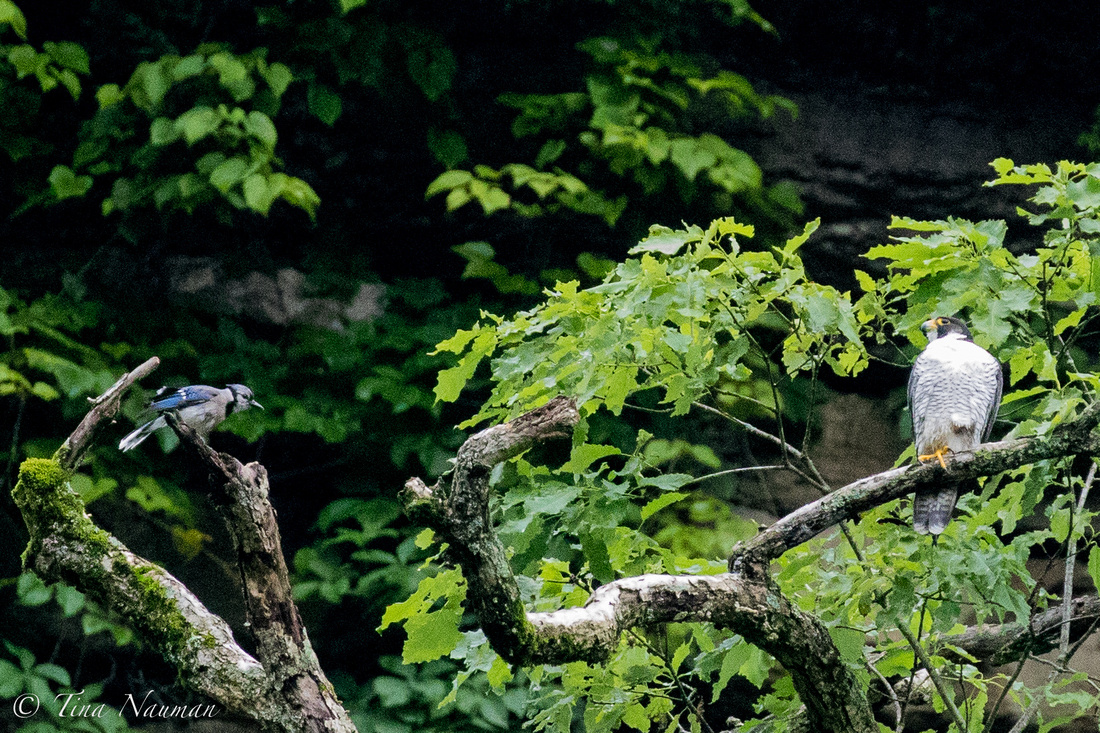

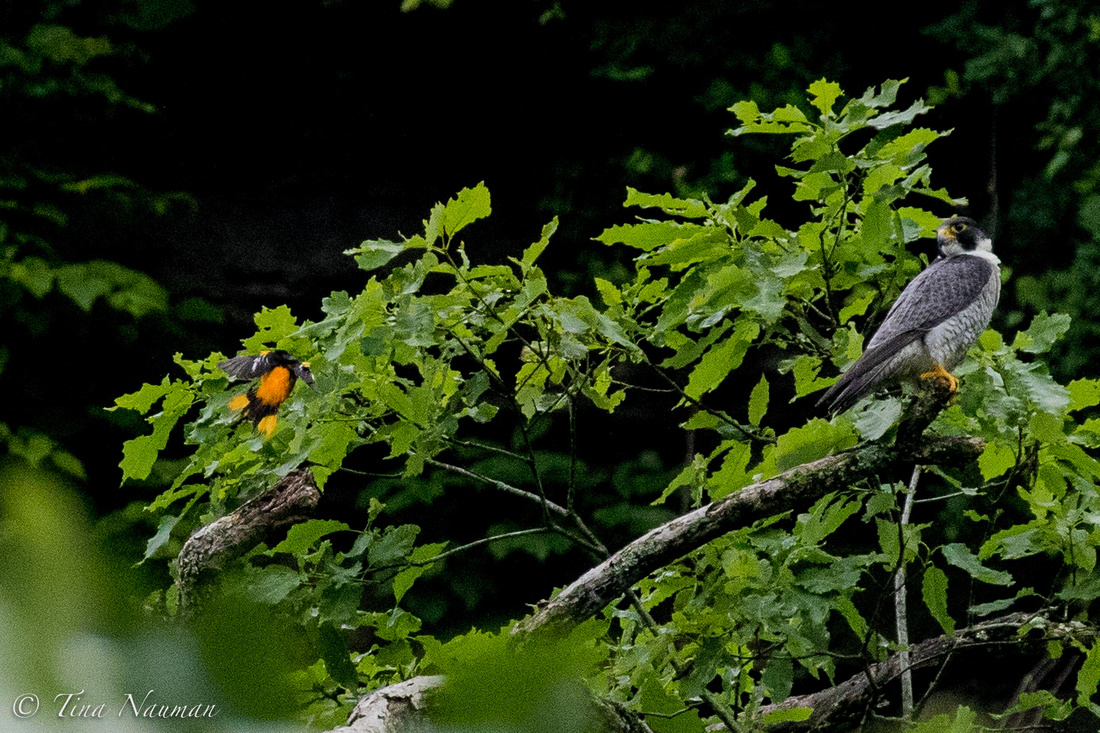

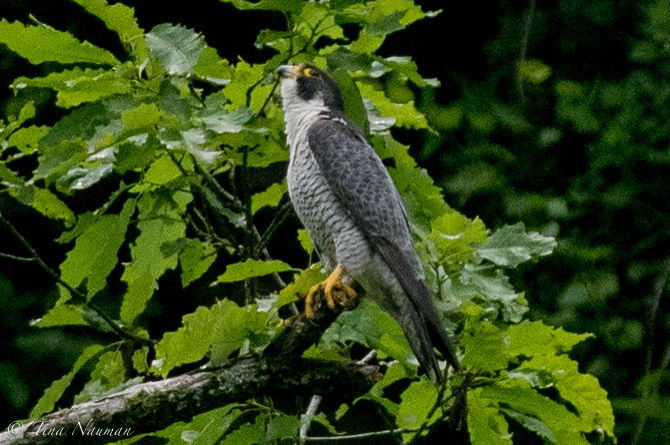

WHILE DEE EXPLORES A NEW CLIFF
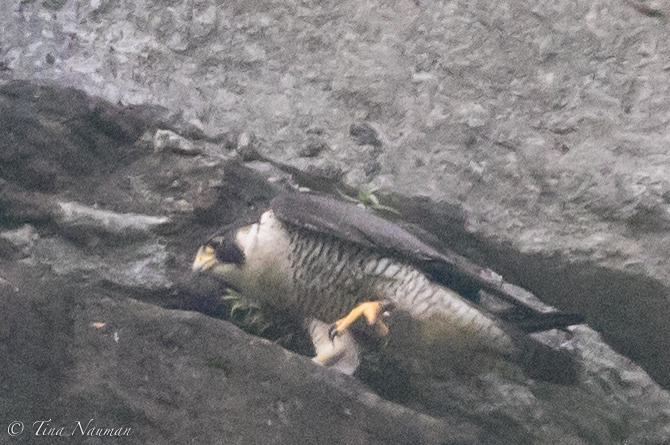

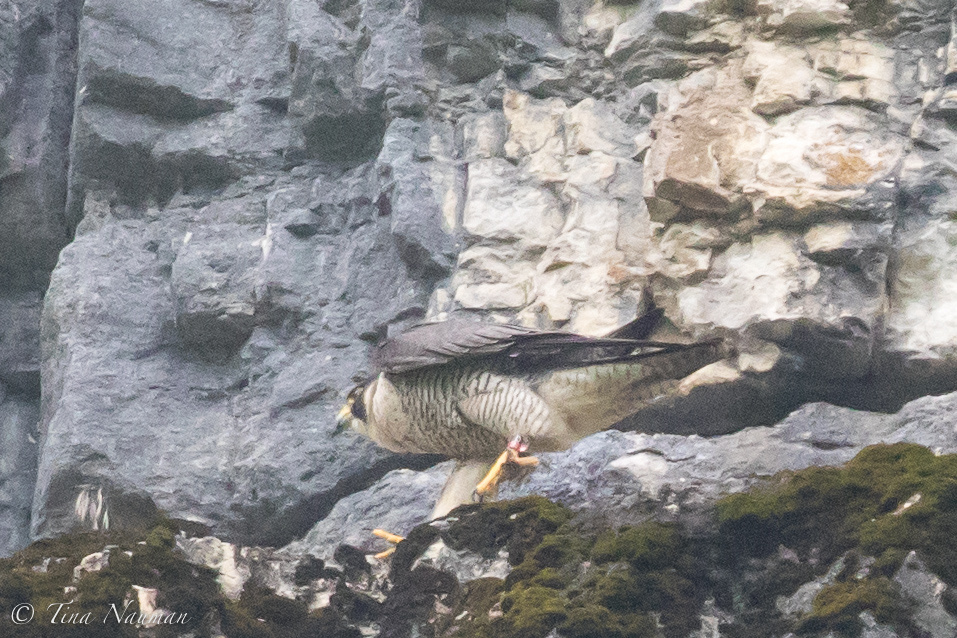

I'M OFF TO FOLLOW THE BIRDS
I will be leaving Kentucky and move into my 3rd year of full-time camping as I "follow the birds" around the country. I will return next spring for a month to check in on Dee and Boone II and hopefully a cliff-full of eyasses........somewhere!
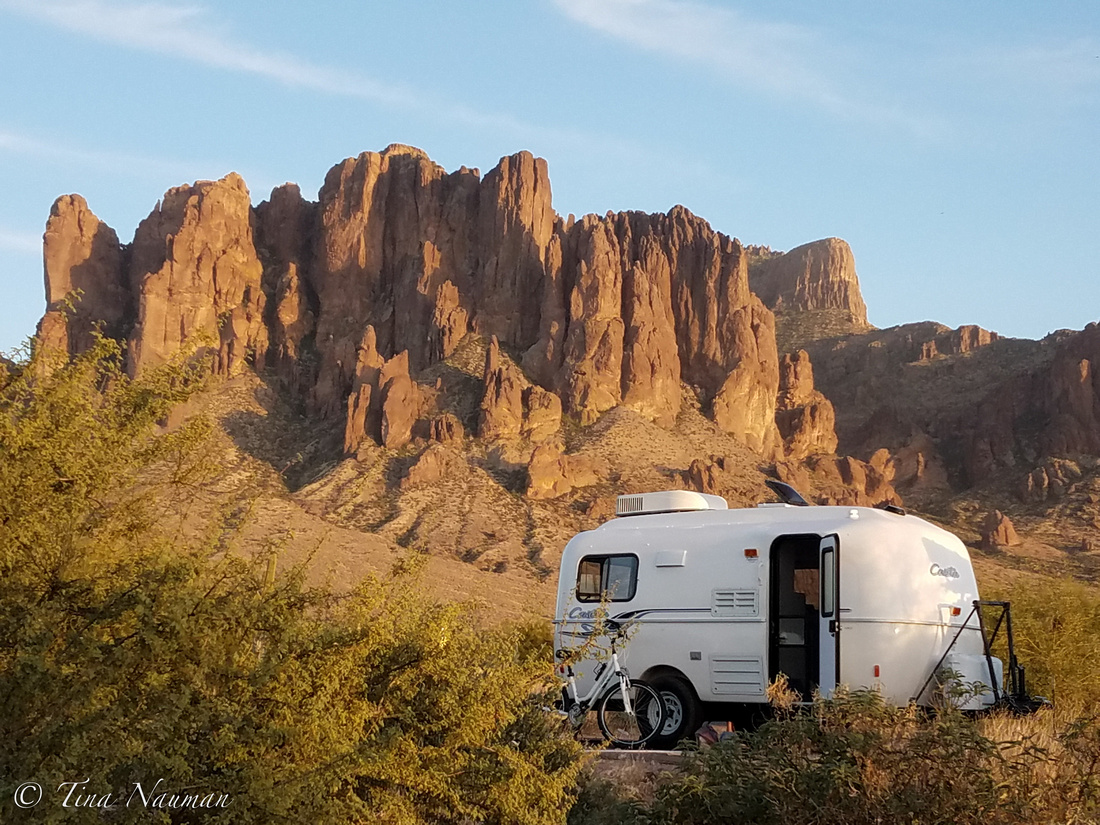

Brief summary of prior years:
2015: Banded Boone and unbanded Dixie were discovered on the cliff. Dixie was a sub-adult and although some sub-adult females do lay eggs this is not common. There were no eggs.
2016: Dixie was not observed but Boone courted several females over a 2 week period and Lady Dee became the new resident female. Dee was a rehabbed sub-adult and, as expected, there were no eggs.
2017: Dee and Boone successfully hatched and fledged two that we believe were 1 male and 1 female. Photo 2017 with Boone delivering prey.
Note: my photos, blog and information contained in the blog are copywrited. Please do not share any photos of information without my permission according to copywrite laws.